The Fine Print: 5 Ways to Accidentally Void Your Honda Warranty
Your Honda is more than just a car; it's an investment in reliability, performance, and peace of mind. And a huge part of that peace of mind comes from its comprehensive warranty, designed to protect you from unexpected repairs due to manufacturing defects. But here's the kicker: warranties aren't an 'anything goes' carte blanche. There's a 'fine print,' a set of guidelines that, if overlooked, could leave you footing the bill for a repair you thought was covered. Don't let a simple oversight turn into a costly mistake!
In this detailed guide, we're diving deep into five common ways Honda owners, often unknowingly, might accidentally void parts of or even their entire vehicle warranty. We'll break down what to watch out for, how to stay compliant, and how to keep your Honda running smoothly while maintaining that invaluable warranty protection. Let's make sure you're well-informed and your Honda warranty remains intact!
1. Skipping Scheduled Maintenance or DIY Disasters
One of the most fundamental requirements of any vehicle warranty, including your Honda's, is adherence to the manufacturer's recommended maintenance schedule. Your owner's manual isn't just a suggestion; it's your car's bible for longevity and warranty compliance. Neglecting essential services like oil changes, tire rotations, fluid checks, filter replacements, or major interval services can lead to premature wear and tear on components. If a failure occurs that can be directly attributed to a lack of proper maintenance, Honda has the right to deny the warranty claim. For example, if your engine seizes due to sludge build-up from extended oil change intervals, that repair will likely come out of your pocket, not Honda's warranty.
Furthermore, while the allure of saving money with DIY repairs is strong, proceeding without proper knowledge, tools, or attention to detail can also lead to issues. If a self-performed repair or modification inadvertently causes damage to another component, that subsequent damage will not be covered under warranty. It’s crucial to keep meticulous records of all maintenance, whether performed by a certified Honda dealership, an independent mechanic, or yourself. Keep receipts for parts and fluids, and log dates and mileage. This documentation is your proof that you've diligently cared for your Honda, upholding your end of the warranty agreement.
2. Using Non-OEM or Aftermarket Parts (The Wrong Kind)
There's a common misconception that using any aftermarket part automatically voids your car's warranty. Thankfully, that's not entirely true, thanks to the Magnuson-Moss Warranty Act in the United States. This federal law states that a manufacturer cannot void your warranty simply because you've used an aftermarket part, unless they can prove that the aftermarket part *caused* the failure. However, this is where the 'fine print' comes in. If a non-OEM (Original Equipment Manufacturer) part or an incompatible aftermarket part directly leads to a component's failure, the warranty will not cover the repair of that specific failure or any damage resulting from it.
For instance, installing a cheap, ill-fitting, or incorrect replacement brake pad that causes excessive wear on your rotors or leads to a brake system malfunction would likely not be covered. Similarly, using a non-approved battery that damages the electrical system could fall into this category. While many aftermarket parts are perfectly fine and even high-quality, it's vital to choose reputable brands and ensure they meet or exceed Honda's specifications, especially for critical systems like the engine, transmission, and braking. When in doubt, consulting with a Honda service technician or opting for genuine Honda parts offers the highest assurance of compatibility and warranty protection for your Honda vehicle.
3. Performance Modifications and Tuning
This is a particularly exciting area for enthusiasts but a potentially hazardous one for warranty coverage. Modifying your Honda for increased performance, whether through engine tuning (ECU re-flashes), adding turbochargers or superchargers, installing aftermarket exhaust systems that alter back pressure, or making significant suspension changes, can put stress on components beyond their original design parameters. If a modified component or a system affected by a modification fails, Honda is likely to deny the warranty claim, citing that the modification caused or contributed to the failure.
For example, installing a performance engine tune that increases horsepower and torque could lead to premature wear or failure of the transmission, clutch, or even internal engine components. While replacing your stereo won't void your engine warranty, an aftermarket exhaust system that requires cutting or welding could void the warranty on related exhaust components or even the emissions system if it alters its function. It's crucial to understand that even seemingly minor performance upgrades can have ripple effects. Before making any significant modifications to your Honda, especially those related to the powertrain, suspension, or electrical system, it's wise to consider the potential warranty implications and consult with your dealership. Often, reverting to stock before seeking warranty work is a common, albeit inconvenient, practice for enthusiasts.
4. Neglect and Abuse (Beyond Normal Wear and Tear)
Your Honda warranty covers manufacturing defects and failures that occur under normal operating conditions. It does not, however, cover damage resulting from neglect, misuse, or abuse. This category is broad and encompasses a range of actions and inactions that go beyond what's considered typical driving and proper vehicle care. Examples of abuse include, but are not limited to, using your non-off-road vehicle for off-roading, participating in racing or competitive events, overloading your vehicle beyond its specified weight capacity, or failing to address a known issue promptly that then escalates into a more significant problem.
Driving through deep water during a flood, which then causes engine or electrical damage, would likely be considered abuse or neglect, especially if warnings were present or it was clearly unsafe. Similarly, continuing to drive with a warning light illuminated on your dashboard (e.g., low oil pressure, overheating) and subsequently damaging the engine or other systems would typically not be covered. Accident damage, regardless of who is at fault, is also not covered by your manufacturer's warranty, as that falls under your auto insurance. Honda expects owners to operate their vehicles responsibly and address issues as they arise to prevent further damage. Understanding the difference between a warranty-covered defect and user-induced damage is key to maintaining your Honda's warranty validity.
5. Fluid Faux Pas: Using the Wrong Fluids
This is arguably one of the most overlooked yet critical ways to accidentally void your Honda warranty. Your Honda's engine, transmission, brakes, power steering, and cooling system are all designed to operate with very specific types, weights, and viscosities of fluids. Using the wrong kind of engine oil (e.g., conventional oil when synthetic is required, or incorrect weight), incorrect transmission fluid, incompatible brake fluid, or non-approved coolant can have catastrophic consequences for these sensitive systems. The consequences might not be immediate, but incorrect fluids can lead to increased friction, corrosion, seal degradation, or improper lubrication, ultimately causing premature wear and failure.
For example, putting standard automatic transmission fluid into a Honda that specifically requires Honda's proprietary CVT fluid could quickly destroy the continuously variable transmission. Likewise, using a non-compatible coolant could lead to corrosion in the cooling system and damage the water pump or radiator. Always refer to your Honda owner's manual for the exact specifications for all fluids. When getting service done, especially at an independent shop, explicitly state that you require fluids that meet or exceed Honda's specific recommendations. Saving a few dollars on a cheaper, incorrect fluid can lead to thousands of dollars in repairs that your warranty will not cover. Don't make this common, costly mistake!
Conclusion
Your Honda warranty is a valuable asset, protecting your vehicle and your wallet from unforeseen manufacturing defects. While it's easy to assume everything is covered, understanding the 'fine print' and your responsibilities as a Honda owner is crucial. By diligently following your Honda's maintenance schedule, using appropriate parts and fluids, thinking twice before making performance modifications, and operating your vehicle responsibly, you can easily avoid the pitfalls that might lead to a voided warranty.
Remember, knowledge is power. Always refer to your Honda owner's manual, keep detailed service records, and don't hesitate to consult with a certified Honda dealership service department if you have any doubts about maintenance or modifications. Protecting your Honda's warranty means protecting your investment and ensuring years of worry-free driving enjoyment. Drive smart, maintain smart, and keep that Honda warranty intact!
Where can I find my VIN?

Related Topics
- The EV Battery Guarantee: Ford's 8-Year/100,000-Mile Coverage for Mustang Mach-E and F-150 Lightning
- Gold vs. Blue: Which Ford Blue Advantage CPO Warranty is Right for Your Used Vehicle?
- Beyond the Basics: A Deep Dive into Ford's 3/36 Bumper-to-Bumper vs. 5/60 Powertrain Coverage
- Your Ultimate Guide to Buying a Pre-Owned Ford: Decoding the Ford Blue Advantage Warranty

